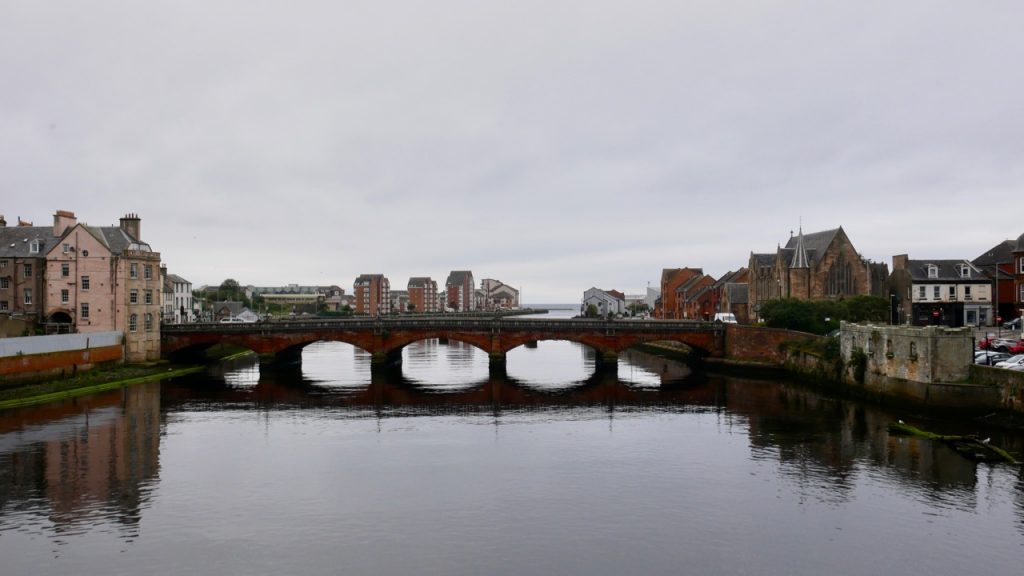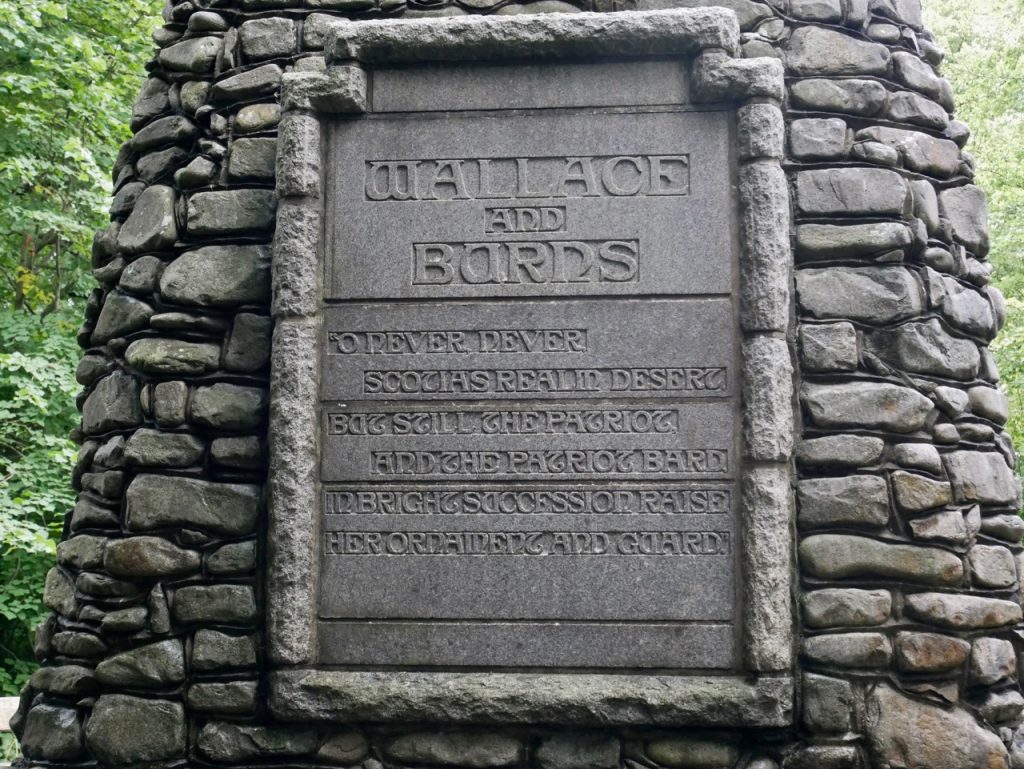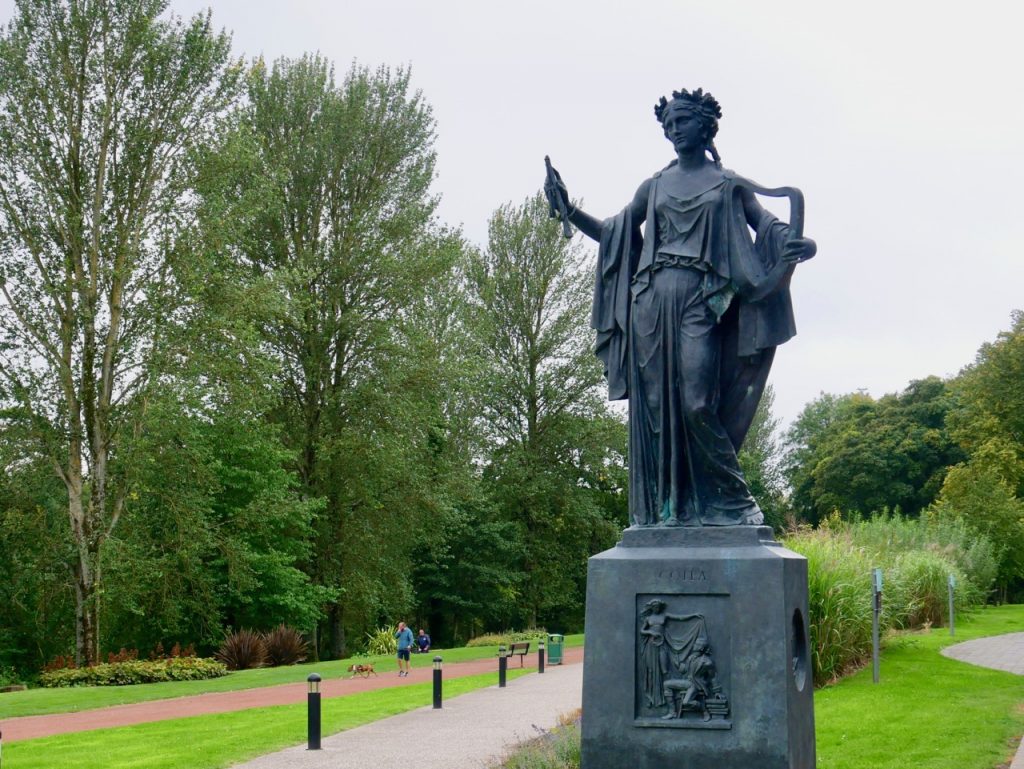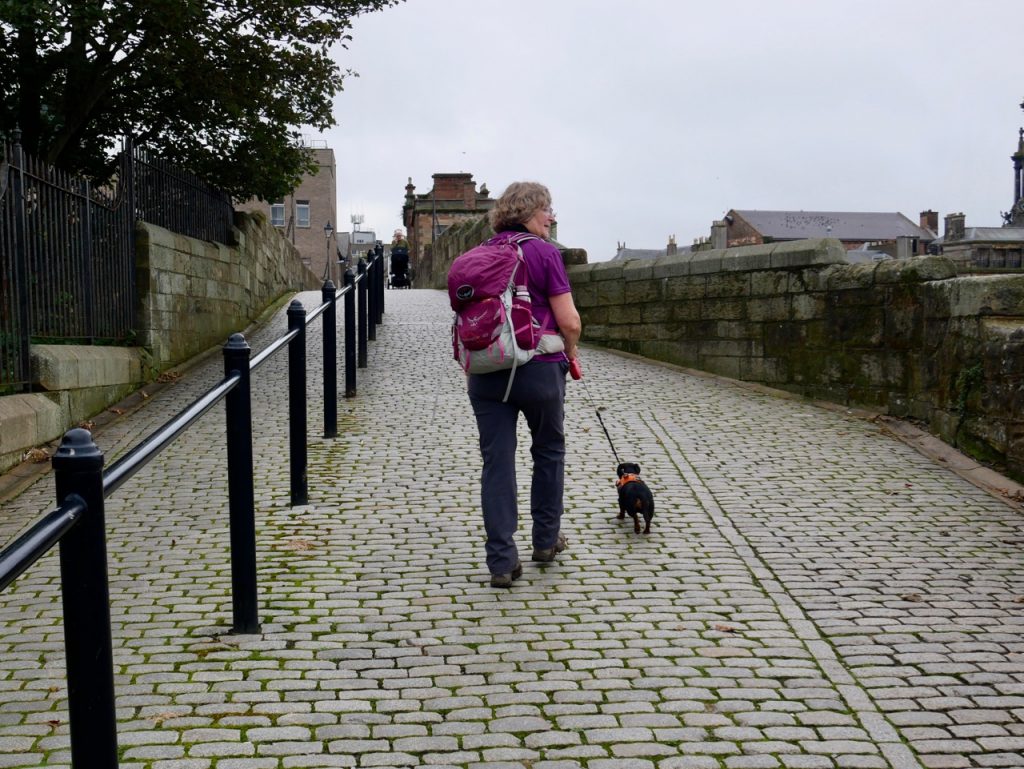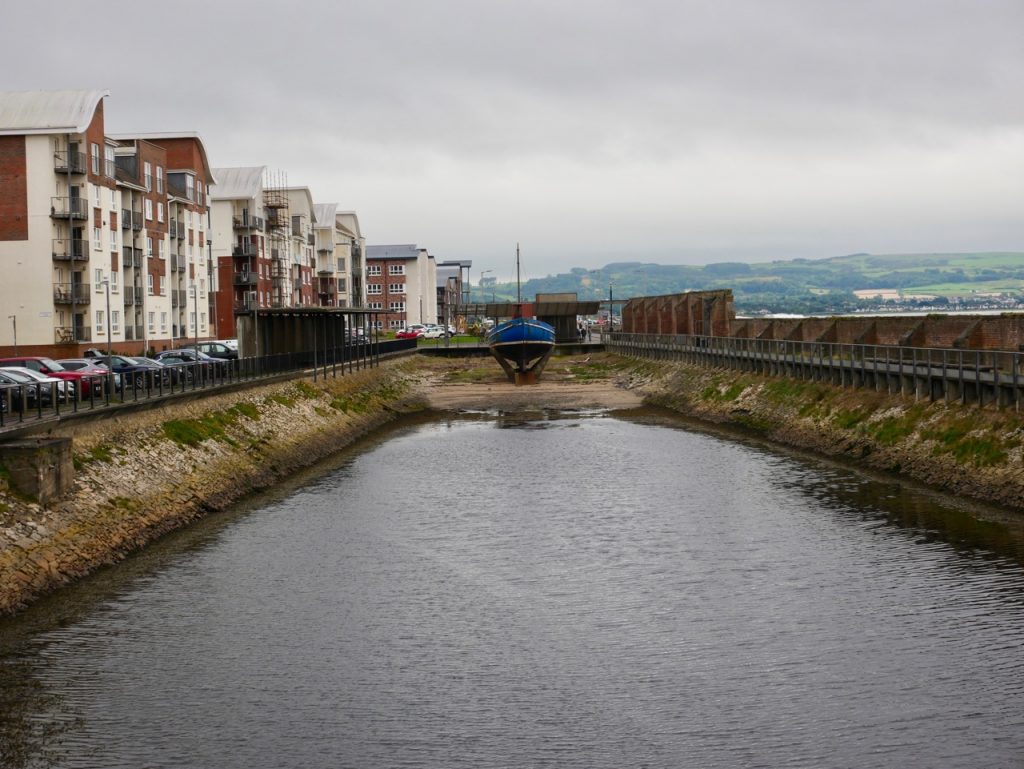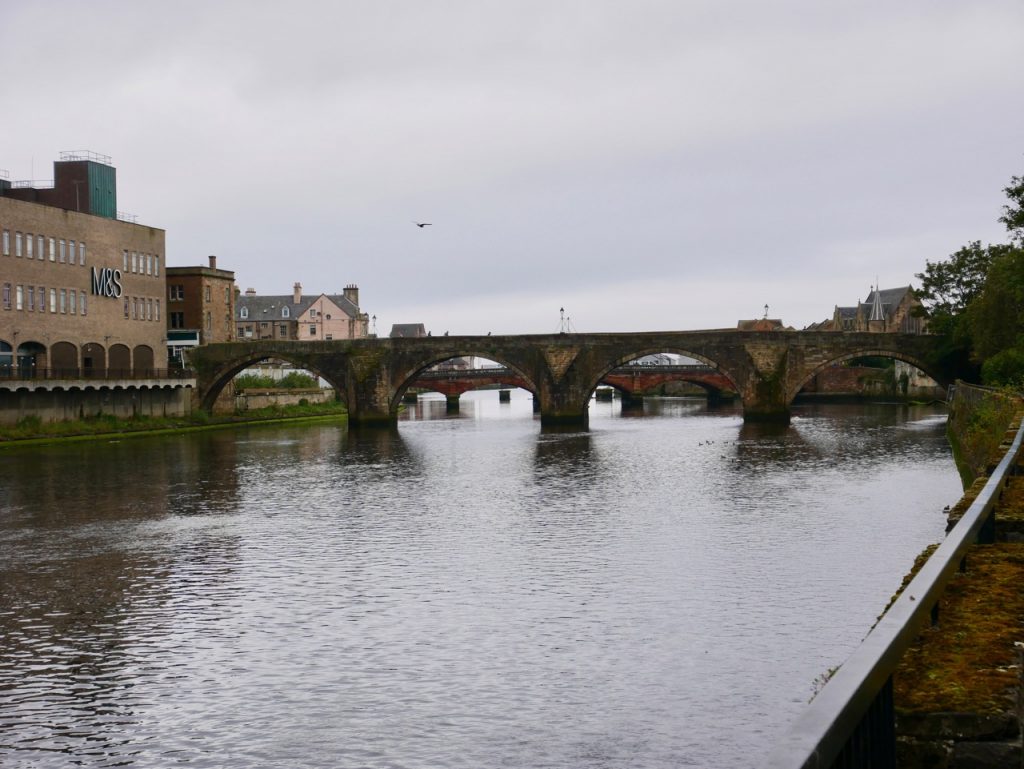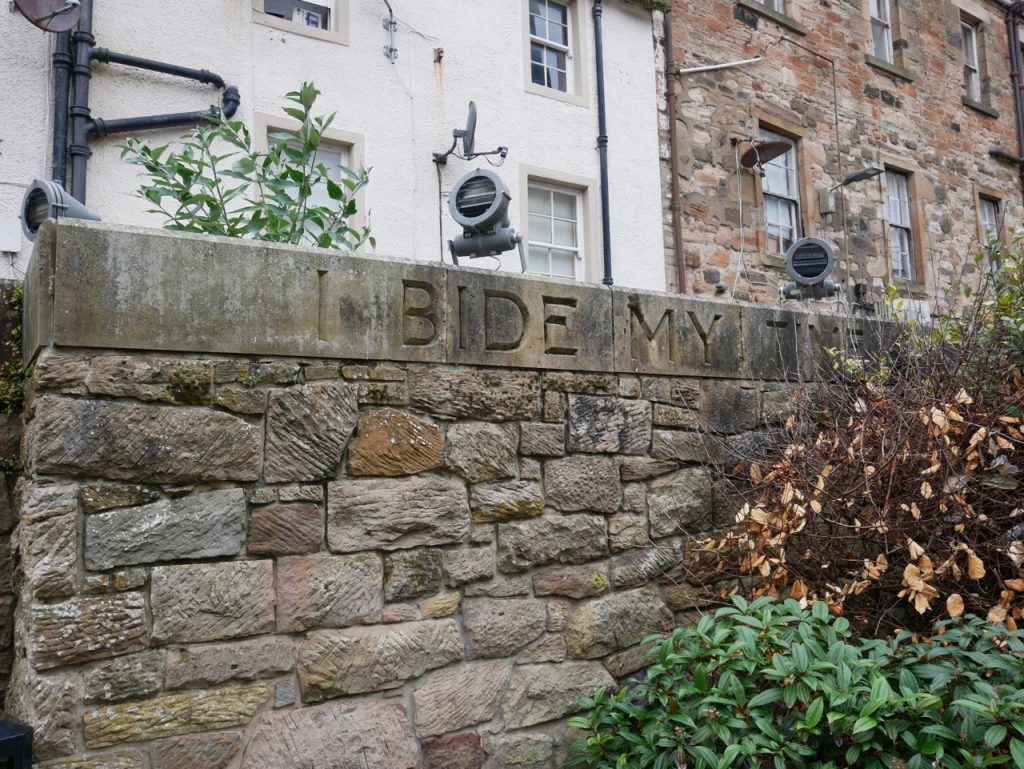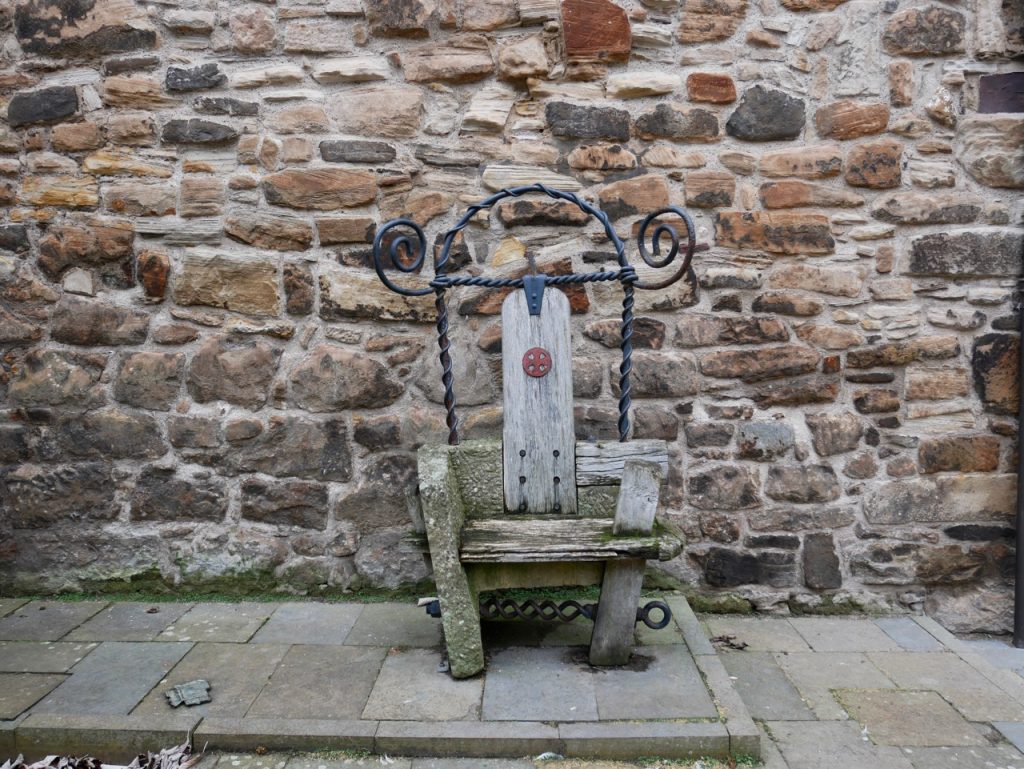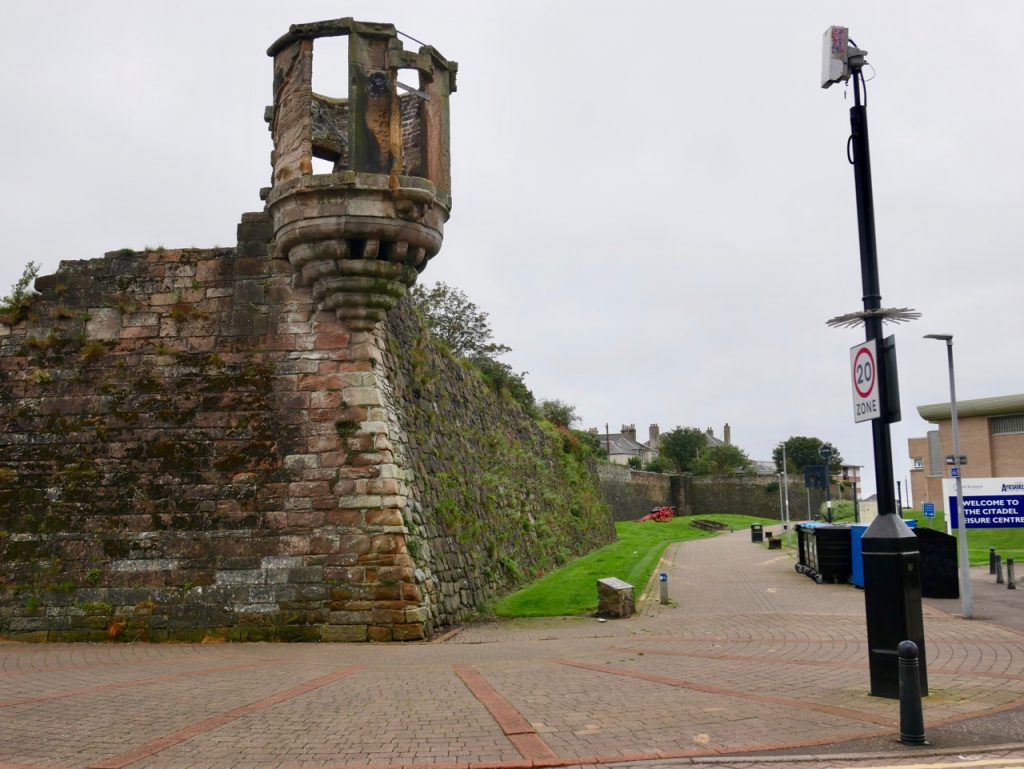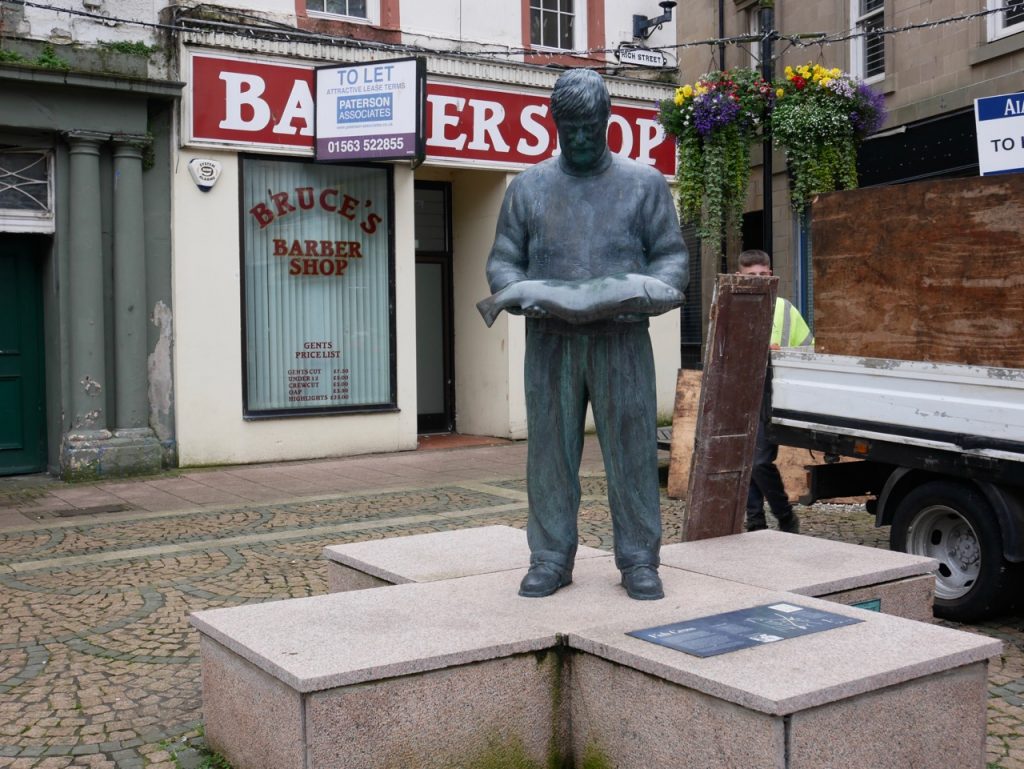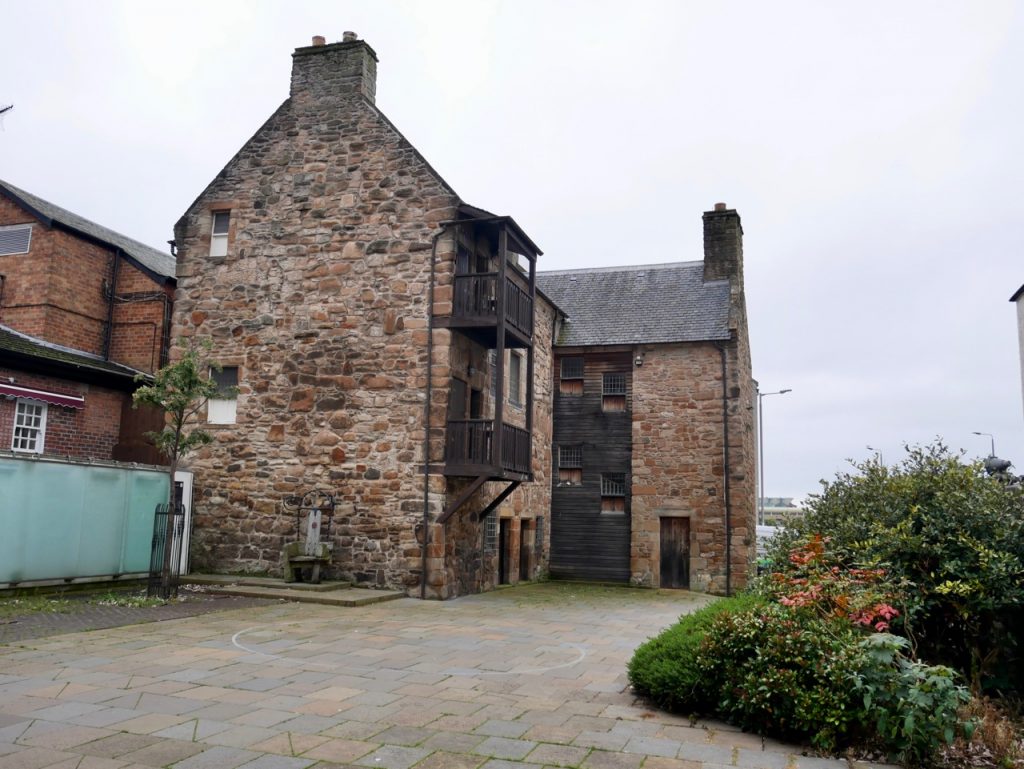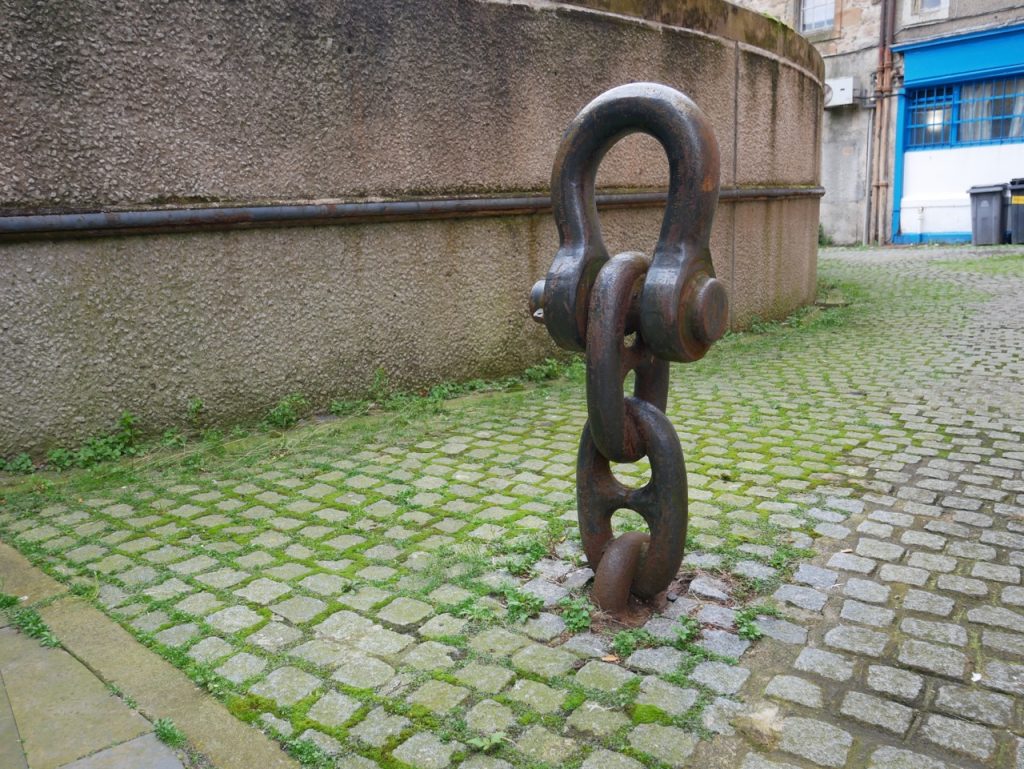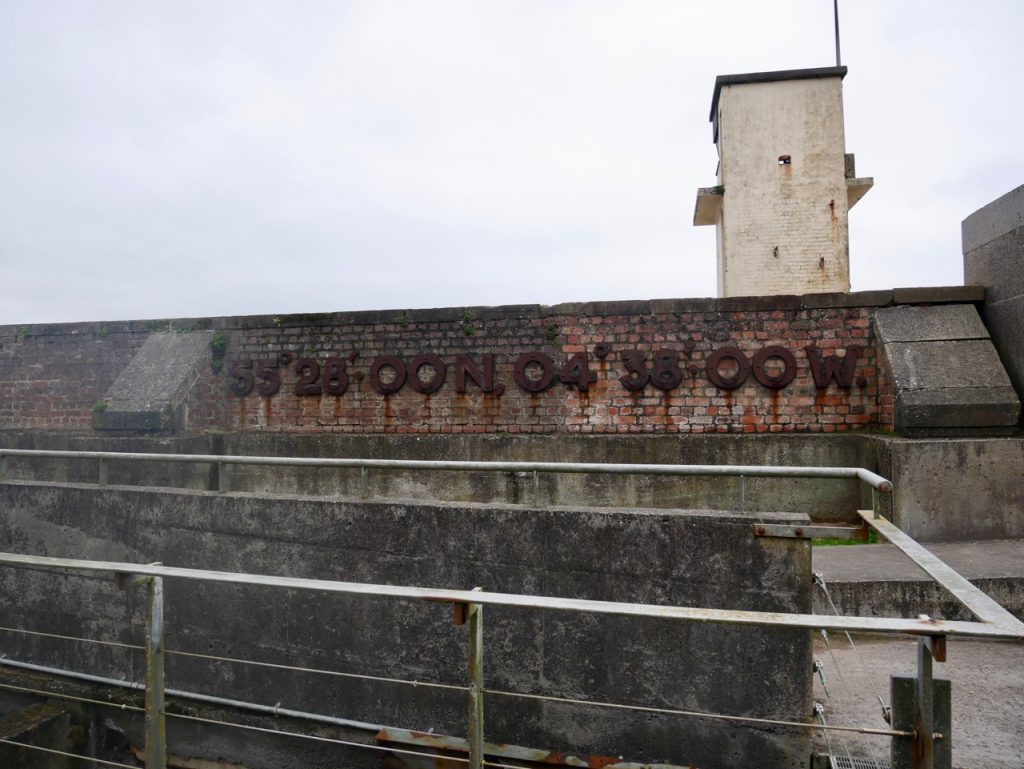8.19 miles 3h 55m 113m ascent
River Ayr Way: Tarholm-Ayr
This, our final stage of our River Ayr Way, brought us to the coast. It was a relatively short walk, mostly on riverside paths, but with some mud near the start that needed close attention. It wasn’t especially well signed, and where there were waymarkers, their arrows were often too faded to read. That said, there were some interesting sights along the way, we found a bench by the river for lunch, it didn’t rain (much) and, at the end, we could bask in the warmth of our achievement.
We began this section by Tarholm Bridge. The bridge has a pedestrian walkway so we did not have dodge traffic other than when crossing the road. Descriptions of the route talk of walking along the B744 until it turns to the left after about 100m but there is now a gate, with a River Ayr Way sign, immediately after the bridge. This led to a grassy track by the river, and spared us the road walk.
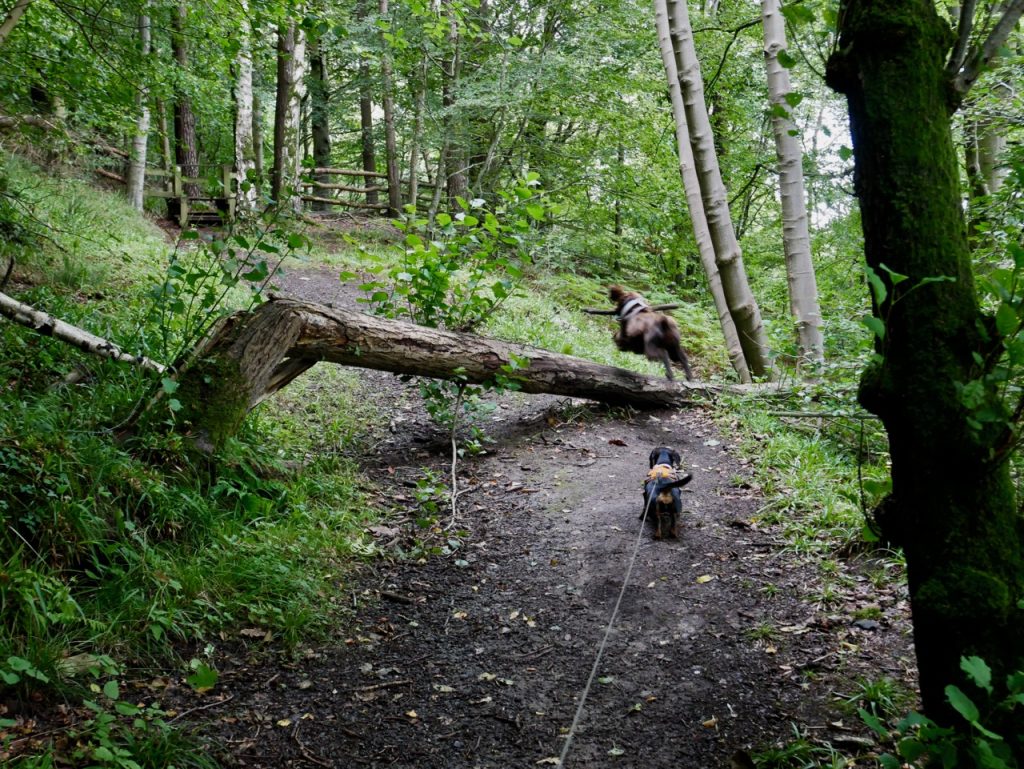
Craighall Wood
There is a wide footpath through Craighall Wood. This follows the river but climbs higher where the bank is steep. Unfortunately there were some very muddy sections hemmed in by stands of brambles, their long barbed branches leaning into the path like spectators at the Tour de France. I found myself pussy-footing about trying to find firm ground near the path’s edges while avoiding the brambles. In retrospect I should have done what the dogs did and just run through the mud without a care.
After the mud, we had firmer paths, with wooden walkways and steps where they were needed. The River here was shallow enough to produce white water and the trees lining its bank were showing autumn reds along with their yellowing green. The sound of running water, and calls of birds in the trees were the background music to our walk.
Where the path forks I would have headed back down to the river but a waymarker, its direction arrow faded but legible, indicated the higher path. This took us out of the trees and away from the river and into a field. The way from there was less certain. I followed a hawthorn avenue, which looked to have a worn track between the trees, but it was soon obvious that the way I had chosen was of bovine rather than human origin. We found another faint track and followed that to a gate with a well defined track beyond.
In a garden by the end of the track, a Buddha looks across the road to an ornate iron gate. One might dismiss it as the entrance to a private house but it carries the words ROBERT BURNS WORLD FEDERATION. Beyond it is the Wallace and Burns Monument, a 2m cairn commemorating two of the area’s famous sons, both of whom had walked these woods in their time.
‘I chose a fine summer Sunday, the only day of the week in my power, and walked half a dozen of miles to pay my respects to the “Leglen Wood”, with as much devout enthusiasm as ever pilgrim did to Loreto; and as I explored every den and dell where I could suppose my heroic Countryman to have sheltered, I recollect (for even then I was a Rhymer) that my heart glowed with a wish to be able to make a Song on him, equal to his merits.’
Robert Burns, letter to Mrs Dunlop of Mossgiel, 1786

Monument in Leglen Wood
Inscribed on the cairn are the final lines of Burns’ “The Cotter’s Saturday Night“:
WALLACE and BURNS
The Cotter’s Saturday Night, 1786
O never, never Scotia’s realm desert
but still the patriot and the patriot bard
in bright succession raise her ornament and guard
On the reverse of the cairn are the words:
“Syne to the Leglen Wood when it was late
To make a silent and safe retreat”
This memorial was erected by
The Burns Federation, September 1929
The site was gifted by
Mr John M Hannah, Girvan Mains
The cost of the cairn was defrayed by
Rev J C Higgins, BD
Minister of Tarbolton Parish
The first two lines are taken from William Hamilton’s 1722 translation of the fifteenth century epic, The Actes and Deidis of the Illustre and Vallyeant Campioun Schir William Wallace. Burns said of Hamilton’s poem, that it “…poured a Scottish prejudice in my veins which will boil along there till the flood gates of life shut in eternal rest.”
After paying our own respects to Leglen Wood we returned to Oswald’s Bridge. Built as an estate bridge in 1826, this crossing is narrow but carries a public road and we found several cars vying with to use the bridge. Fortunately its architects didn’t forget pedestrians and there is space over each buttress to stand aside, so we could take our time crossing and admire the view.
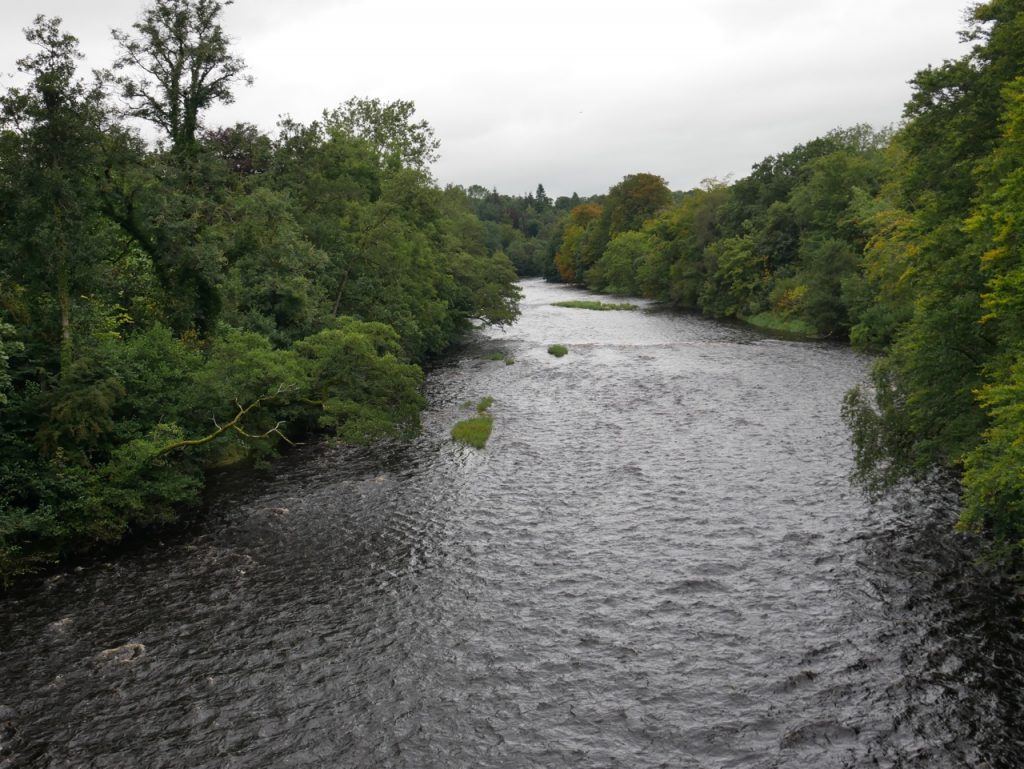
River Ayr at Oswald Bridge
By now we were walking on roads so both dogs needed to be on leads. Overgrown brambles kept us off the paving but there was plenty of grass verge between us and the traffic. To our left, beyond the bright hips and haws of the hedgerow, cows with their calves grazed quietly in the fields below the imposing Agricultural College.
There were no signposts or waymarkers to confirm it but a farm track on our left was our route. After many hours of seeing few other walkers we found we were sharing the path with increased numbers of cyclists, other walkers and their dogs. I turned to photograph the fields and stopped to watch an aeroplane on its approach to Prestwick. An Voyager in military grey. (For the anoraks, it was ZZ334 Voyager KC.3).
The track took a dog-leg as it led us around the fields perimeter then joined a minor road. Waymarkers along here reassured us we were on the route, but their arrows were all faded and were no help in deciding which path to choose when we came to junctions. At the very busy A77, we turned left, and thankfully there was a pavement. The road bridge took us across the river and concrete steps led us down to cross under the road.
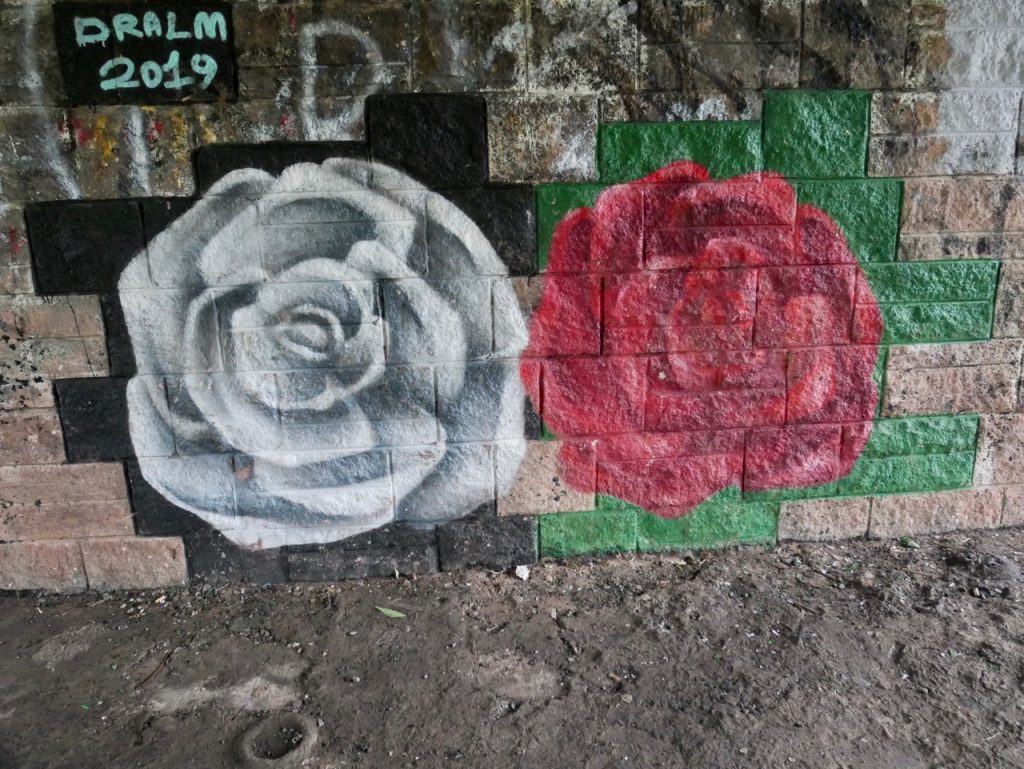
Graffiti under the A77
The River Ayr Way was now following the River Ayr Walk, a much older route opened in 1910 (though, at that time, it was private). A pleasant riverside path took us through mature woodland until a footbridge took us across the river into maintained parkland. This was once the Craigie Estate and now houses the university.
A bronze statue in front of the university buildings depicts Coila in classical guise, while reliefs in its stand show her appearing to Robert Burns, and the plough she tempted him to set aside to write his verse. Coila is the embodiment of the inspiration that Burns felt, his poetic muse. She has been placed here to inspire and encourage today’s students as she once had for Burns himself.
A waterside walk took us into Ayr and down to the Auld Brig where we ran out of defined paths or signs. But it wasn’t too difficult to find our way back to the riverside.
We didn’t explore the old town of Ayr but our walk took us by some of its historic places: ‘Reminiscence’ a statue of John the Fisherman, stands at the Fish Cross; Loudon Hall, where Mary Queen of Scots stayed in 1563 and one of the oldest houses in Ayr; the Citadel, or its remains, a formidable fortress completed in 1654 during Cromwell’s Commonwealth; the old ‘Watchful’ in Maiden’s harbour.
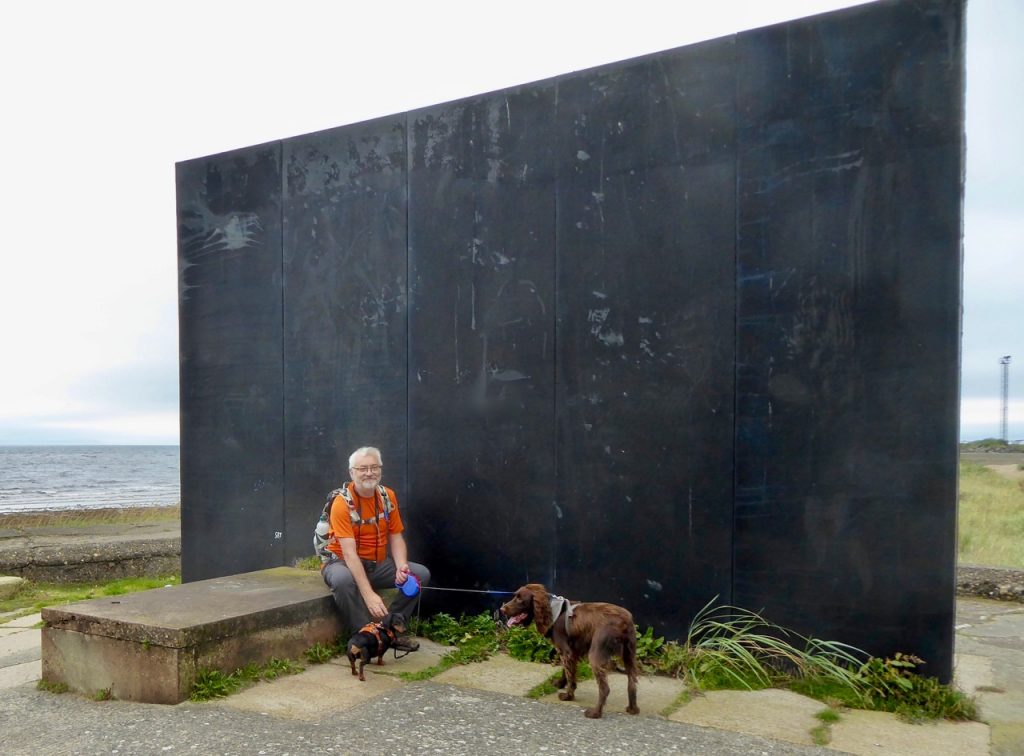
The monument of cast coal
The end of the trail is marked by a large black structure. A block cast from coal dust from the mine the trail’s start at Glenbuck. We paused there for our compulsory end-of-walk photos but decided we should walk on to the lighthouse at the end of the pier. And standing there, among the anglers, the salt-wind in my face, Ailsa Craig and Arran on the horizon, we congratulated each other on another trail walked.
That was the River Ayr Way complete. It had taken us 5 days. I had thought we would walk it in 4 days but parking and access, and a desire to keep the stages below 10-12 miles forced us to take 5 stages. We had walked 42.9 miles with a surprising 651m of total climb (and 904m of descent). The official distance is variously quoted as 41, 42 and 44 miles and I worked out we walked 1.5 miles off route, in walking to the car or visiting places off the trail, so our RAW walk was 41.4 miles.
Farewell, old Coila’s hills and dales,
Farewell to the Banks of Ayr, 1786
Her healthy moors and winding vales;
The scenes where wretched fancy roves,
Pursuing past, unhappy loves!
Farewell, my friends! farewell, my foes!
My peace with these, my love with those,
The bursting tears my heart declare,
Farewell, the bonie banks of Ayr!

